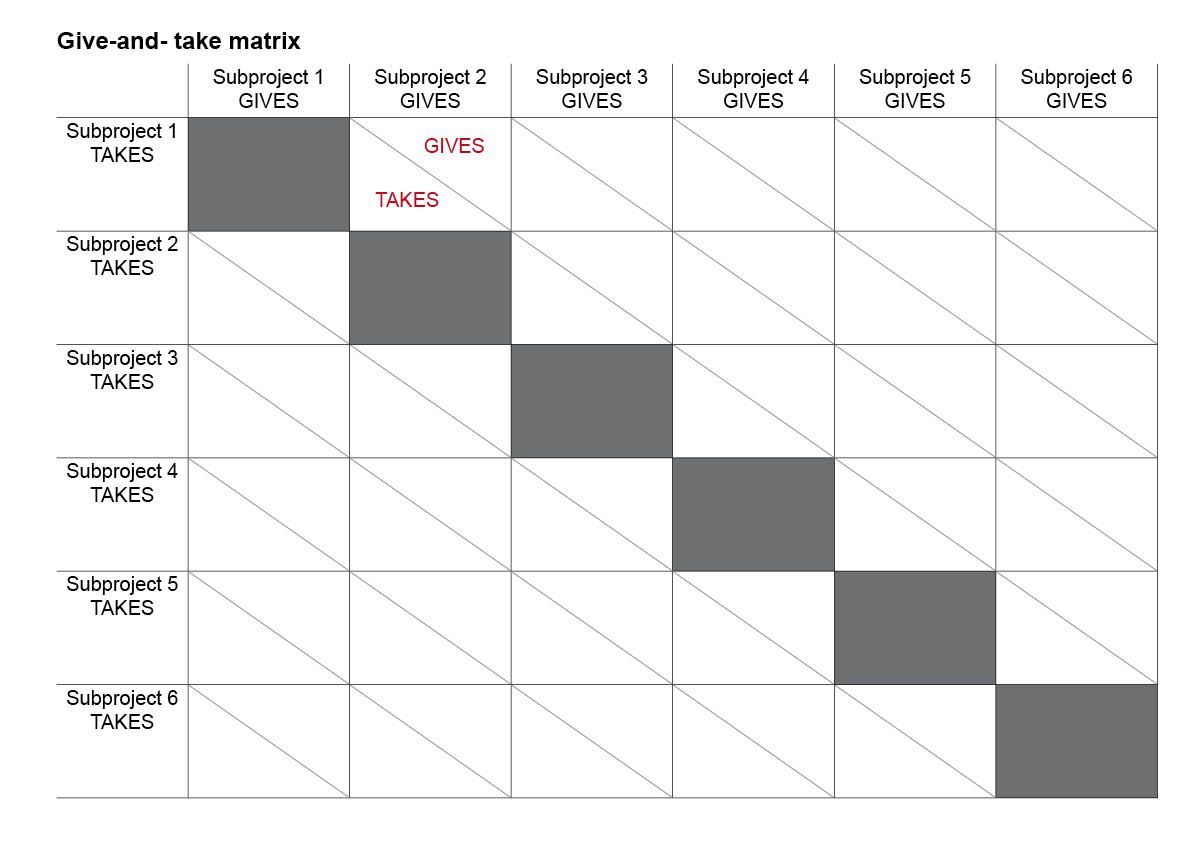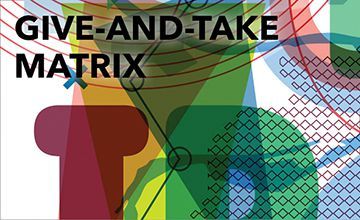Give-and-take matrix
A tool for identifying pieces of knowledge to be shared between subparts of inter- and transdisciplinary projects.
Stauffacher M 2021. Give-and-take matrix. td-net profile (16). Swiss Academies of Arts and Sciences: td-net toolbox for co-producing knowledge. www.transdisciplinarity.ch/toolbox. doi.org/10.5281/zenodo.4627136
| What is the give-and-take matrix? | Give-and-take is a structured process allowing research teams with diverse disciplinary backgrounds to establish links between individual research parts or subprojects. |
| Why should it be applied? | The tool makes a project with subprojects within an overarching framework more integrative and can lead to improved interactions. It helps to clarify who does what and how the various contributions can best be connected. Through this tool, mutual understanding will be strengthened. It helps to make mutual expectations explicit and to identify potentials for intensified or further collaboration. |

Download as a A3 PDF: Give-and-take matrix
| When should it be applied? | The tool is generally helpful if links between subprojects are unclear, need to be specified or have changed. Preferably the tool is applied at the very beginning of project planning, best during the actual problem framing. In later project stages, it can for example be used to explore cross-cutting results or interrelations of achieved results, i.e. if additional analyses are possible based on the results from the interactions induced by the tool. It can further be used to write reports as links between research parts established and necessary cross-references established. |
| How does it work? | The tool is organized with one core matrix (give-and-take matrix) and proceeds as a group workshop of at least three hours, along the following steps: 1) Each subproject individually prepares answers to the following questions:
2) Mixed groups of two or three subprojects (depending on the number of the subprojects and/or team members, these steps can be followed in one or several groups) perform the following tasks:
3) They meet again in the subprojects to perform the following tasks:
4) The plenary session covers the following agenda items:
5) Concrete follow-up actions may be defined, detailing necessary adaptations in the different subprojects in response to the GIVEs promised and the TAKEs received. Some sort of (binding) agreement to follow the mutually discussed “give-and-take matrix” can be helpful. |
| How are thought styles bridged? | Thought styles are bridged by discussing how expected research outputs or desired research inputs, respectively, of different fields fit. Negotiation of interfaces is necessary, but core work within one’s own research part may still be done based on individual thought styles. |
| What’s the output/outcome? | A completed give-and-take matrix, giving an overview of potential reciprocal contributions among subprojects and thus illustrating valuable links and interfaces. Further, an improved mutual understanding of the other subprojects and project team members will be achieved. |
| Who participates in what role? | All researchers of a project team; a facilitator is helpful to secure time, budgets and moderate the plenary session. |
| What do I need to prepare? | Invite all research team members, allow enough time (at least three hours), organise a suited room (big enough to allow work in subgroups in the same room), prepare a core table and make enough printouts of the empty give-and-take matrix on A3-format paper (at least). |
| When not to use the method? | When no overarching project framework or no subprojects exist. When either no readiness exists within a research team to adapt one’s own research or factors like time pressure hinder such adaptations. |


